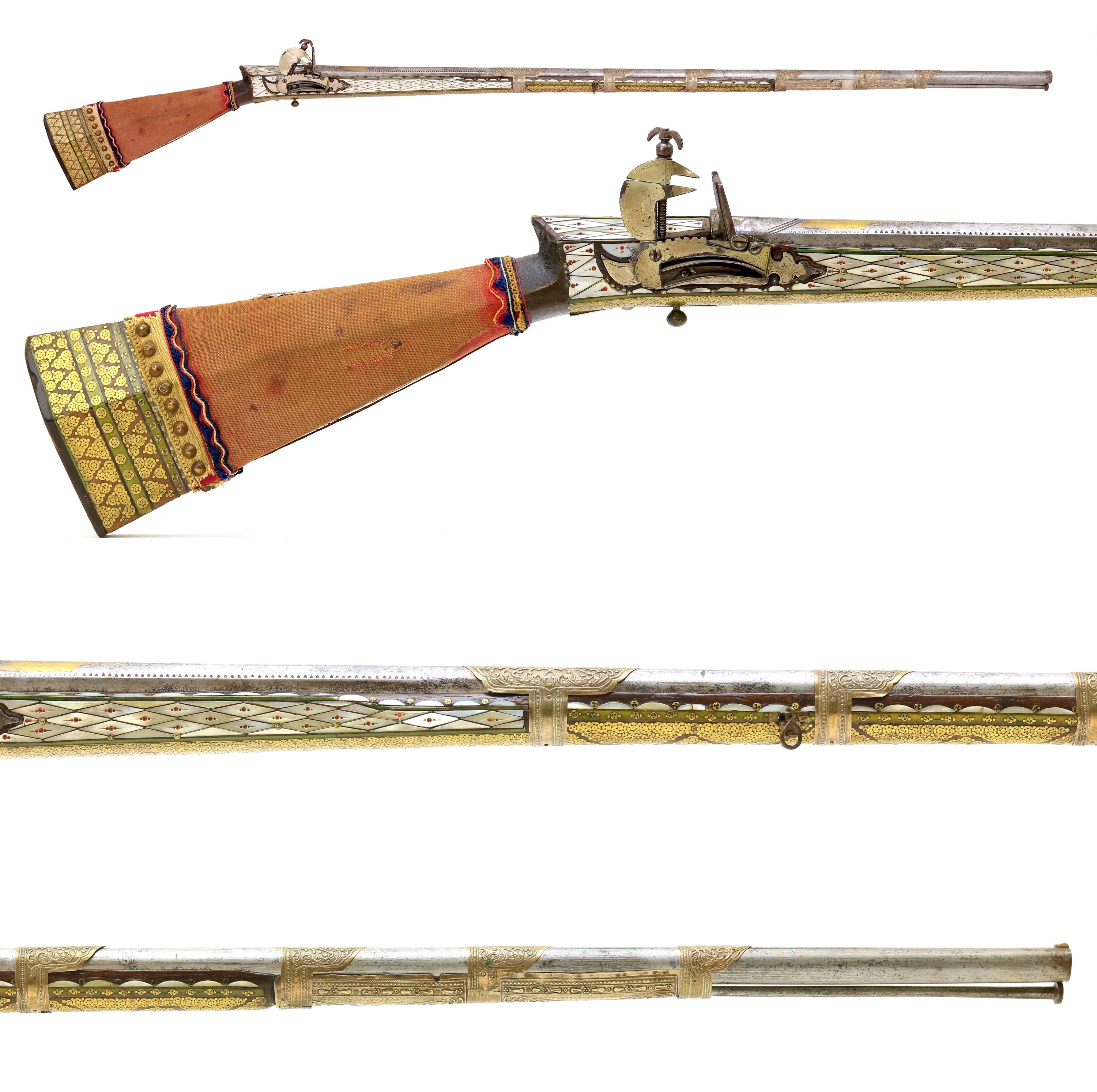In terms of the preference of the Miquelet over the French styled Flintlocks, it seems they took a very "If it ain't broke, don't fix it!" attitude on them. The Ottoman military really started to modernized/conform to the Western European style in the 1820's, I suppose the Flintlocks really started to become normalized after this.
Of interest, perhaps only to myself, I've noticed at least 6 guns with the same lock and pattern on it found in very different regions. From the Bulgarian Paragon I posted above I saw this familiar starburst pattern. I have now seen it on a Dzeferdar from Kotor (Montenegro), a Khirimi from Georgia, Paragon from Bulgaria, Shishane from Turkey, and the Ferguson from Egypt that our dear Rudyard documented. The Shishane is dated to 1797 and the Egyptian rifle belonged to Murad Bey, who died in 1801, so they are perhaps all 18th century.
View attachment 191727
























